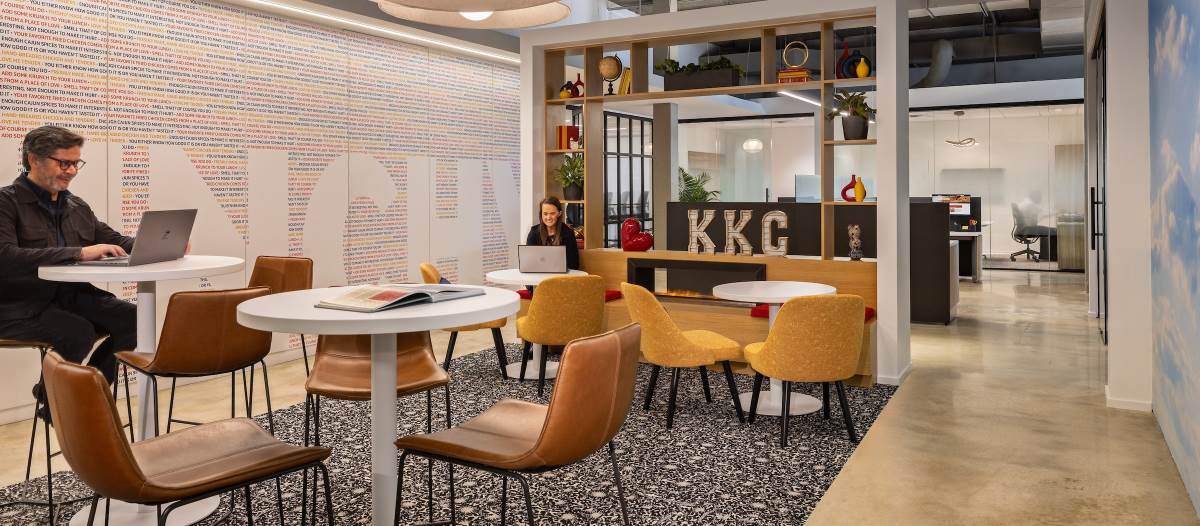Hybrid Working & Sustainability
Enabling efficiency while reducing emissions

This year organizations are looking to do more with less amid a tight labor market and economic uncertainties. This is where the importance of rightsizing their property portfolio becomes evident. Navigating changing work patterns, evolving employee attitudes and expectations, and dealing with external market pressures to reduce emissions and operate more sustainability are all giving impetus to gaining a better understanding of how office space is utilized and how it can be optimized.
Building operations are responsible for around 27 percent of annual global CO2 emissions. Given that the total built environment accounts for 40 percent of emissions in the world, the impact of making more efficient use of space cannot be overestimated.
Two main contributing factors to CO2 emissions are how much energy the average commercial building consumes to operate systems such as lighting, ventilation, heating and air-conditioning, and the second is transport.
Energy is one of an organization’s major costs and will continue to rise, given oil price concerns and other external market forces. Creating energy-efficient buildings can play an essential role in cutting costs while also seeing an organization reduce its carbon footprint.
Globally, transport accounts for approximately 25 percent of CO2 emissions. Much of the world’s transport is still focused on road vehicles such as cars, trucks, buses, and motorbikes, presenting a significant challenge to reducing greenhouse gas emissions.
It is hardly surprising that the FM:Systems 2022 Refocus and Rationalize the Workplace Report has found that 43 percent of business leaders consider reducing their real estate expenses as a top priority over the next 1 - 3 years. As part of this, 31percent are prioritizing investing in the right workspace that best aligns with the culture and mission of their organization.
Making sense of data
Workplace management tech can play a significant part in assisting organizations in managing their Environmental, social, and governance (ESG) goals. To do so requires investing in solutions designed to optimize modern, hybrid working practices. These technologies can gather and analyze data relating to space utilization. In turn, executives can make more informed decisions about greener office policies and practices.
But therein lies the challenge. The survey found that respondents highlighted a lack of access to accurate utilization (44 percent) and space (32 percent) data as the most challenging issues to be addressed to confidently make more well-informed real estate and workplace decisions over the coming years.
This is where technology becomes the critical enabler. Most business leaders, including facilities and real estate teams, would like to spend less time on manually tracking employee attendance (41 percent), visitor traffic (38 percent), and space planning (34 percent). This can only happen through a workplace management solution that automates these time-intensive and error-prone tasks due to their traditional manual nature.
As made possible with intelligent workplace management solutions, faster access to this data will help drive building energy efficiency. It will also show decision-makers whether the existing building is fit for purpose and whether it meets the needs of the organization and its employees. With hybrid working looking like it is here to stay, organizations will probably not need the same amount of space they had pre-pandemic.
Complexities of leases
However, there are existing lease contracts to consider. If businesses are stuck with what they have, it becomes essential to understand how the space is being used and whether it is used optimally. For instance, are the heating, cooling and lighting systems managed so that dead spots (those spaces where employees aren't working) are minimized?
This has resulted more organizations investing in IoT and smart office solutions to manage building operations such as lighting, heating, ventilation and air-conditioning. Coupled with utilization sensors, this provides decision-makers with a treasure trove of data to know which spaces are being used.
For example, if there are 200 people in a four-story building with a capacity of 500 and only 20 people on one of the floors, an organization could consider closing the floor or limiting the number of spaces available. While newer buildings are more energy efficient, with some even being carbon neutral, older buildings make up most of the global commercial estate. Some estimate that 80 percent of the building stock that will be available in 2050 already exists.
Beyond that, they must consider whether it is fit for purpose and whether upgrades can be done to the infrastructure—for example, lighting and HVAC systems. At the end of 2021, the average age of a commercial building in the U.S. was more than 50 years old.
Enhancing the value chain
 By incorporating sustainability initiatives into their office spaces, organizations can benefit from more efficient environments. Depending on the route they take to reduce emissions, the impact on ESG can be significant. While the how these sustainability initiatives will be incorporated will differ for each organization, there is one constant. Without a substantial change to the built environment, there's no real route to becoming net zero by 2050.
By incorporating sustainability initiatives into their office spaces, organizations can benefit from more efficient environments. Depending on the route they take to reduce emissions, the impact on ESG can be significant. While the how these sustainability initiatives will be incorporated will differ for each organization, there is one constant. Without a substantial change to the built environment, there's no real route to becoming net zero by 2050.
The golden thread realizes that real estate plays a major role in sustainability. Granted, the short-term costs of embracing a more energy-efficient environment can be significant; they are easily outweighed by the long-term benefits, given how the market is evolving. By putting the spotlight on optimizing the hybrid workplace, organizations can potentially make tremendous inroads into achieving their ESG goals, especially how they pertain to emissions.
At face value, the easiest way to reduce emissions and improve sustainability is to let employees work from home, use less office space and commute less. In practice, it is more challenging.
The road ahead
Eighty percent of respondents believed that hybrid work would continue over the coming years. However, 61 percent indicated that they would still prefer employees back in the office full-time despite employees having become used to the flexibility that working from home provides them. At the same time, the survey showed that 76 percent of employers who favor full-time office work acknowledge hybrid will lead because it allows employees to achieve a better work-life balance. In fact, 56 percent believe hybrid work will help them attract and retain talent.
If commuting is necessary, employees should be encouraged to use car sharing or public transport. People can even consider walking or cycling to the office if the office is centrally located. The organization can consider offering incentives to support other ways of getting to the office.
The days of the behemoth corporate headquarters could very well be a thing of the past, especially considering the high operating costs of such a building. In the post-pandemic environment, organizations can consider investing in more energy-efficient and smaller buildings like satellite offices closer to their employees.
In addition to reducing emissions thanks to less commuting times, employees are also more likely to come into the office if it is closer, and there is less likelihood of being stuck in traffic for hours on end. Less commuting also has the added benefit of reduced air pollution; with well-being being high on most people’s agendas, this can only be seen as a positive. These shorter commutes will also improve employees' work/life balance, health, and well-being while allowing the organization to access new areas of worker talent.
Change must happen
Whether the organization is tied to an existing building or has the freedom to change, the journey toward reducing emissions starts by measuring the existing carbon footprint. The business should then consider what interventions to implement to start reducing it. Investing in technology will help support sustainable practices when it comes to the physical office environment in the long term.
While sustainability might have once been a box-ticking exercise, governments worldwide have committed to achieving net zero by 2050. Now it’s become a priority for organizations to evolve as well. Realistically, if no substantial change to the built environment takes place, there's no actual route to net zero by 2050. Organizations must therefore realize that real estate plays a major role in strengthening their ESG investments.
Now is the time for businesses to focus on reducing their carbon footprint. Even the smallest change can have an impact on establishing a more energy-efficient environment. Attitudes to the environment are changing, and those organizations with meaningful ‘green’ credentials and policies will most likely attract fresh young talent.

Andrew Butterworth, vice president of strategy at FM:Systems, has over 30 years’ experience working in high level management positions in engineering and property related industries. In his role at FM:Systems, he helps guide the corporate strategy and provides key insights into the future needs of the market. Butterworth is recognized as a thought leader and problem solver in workspace analytics within corporate real estate.
Read more on Occupancy & Human Factors , Sustainability and Workplace
Explore All FMJ Topics









